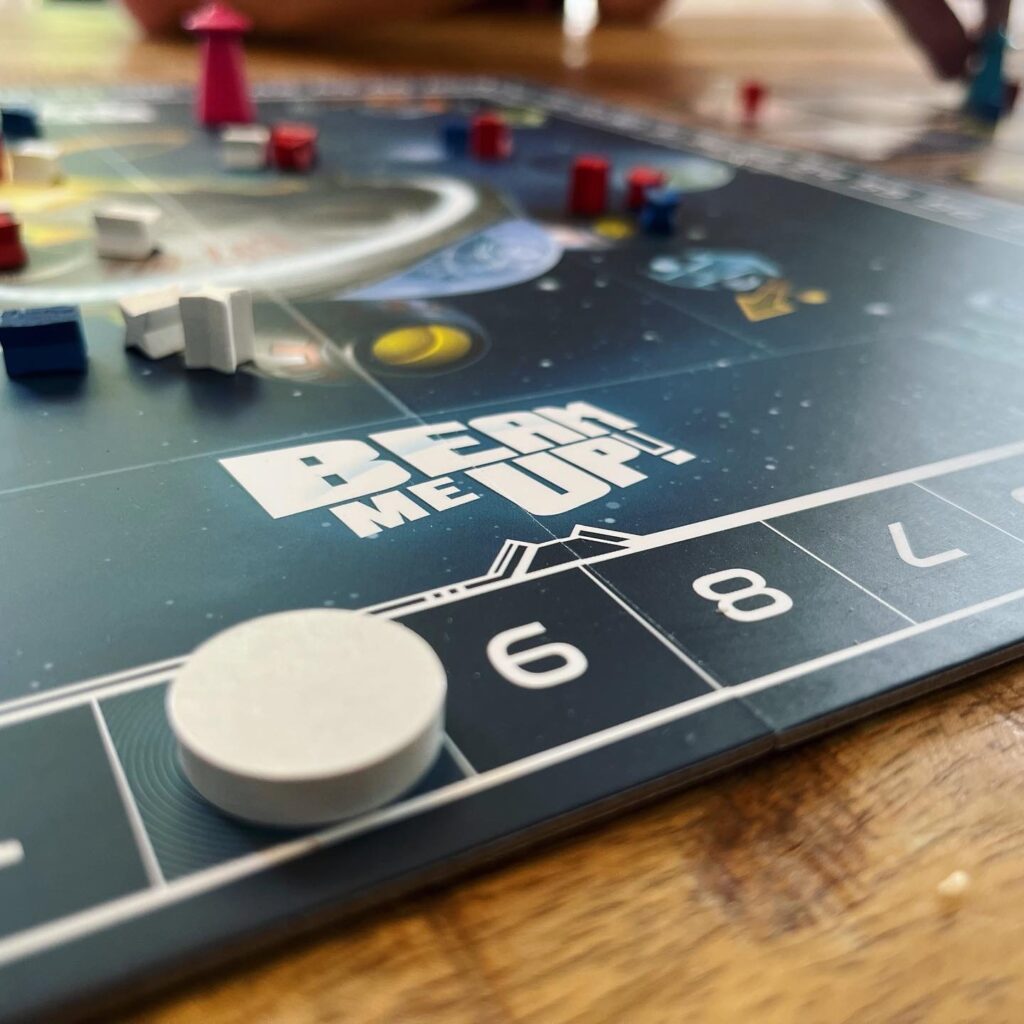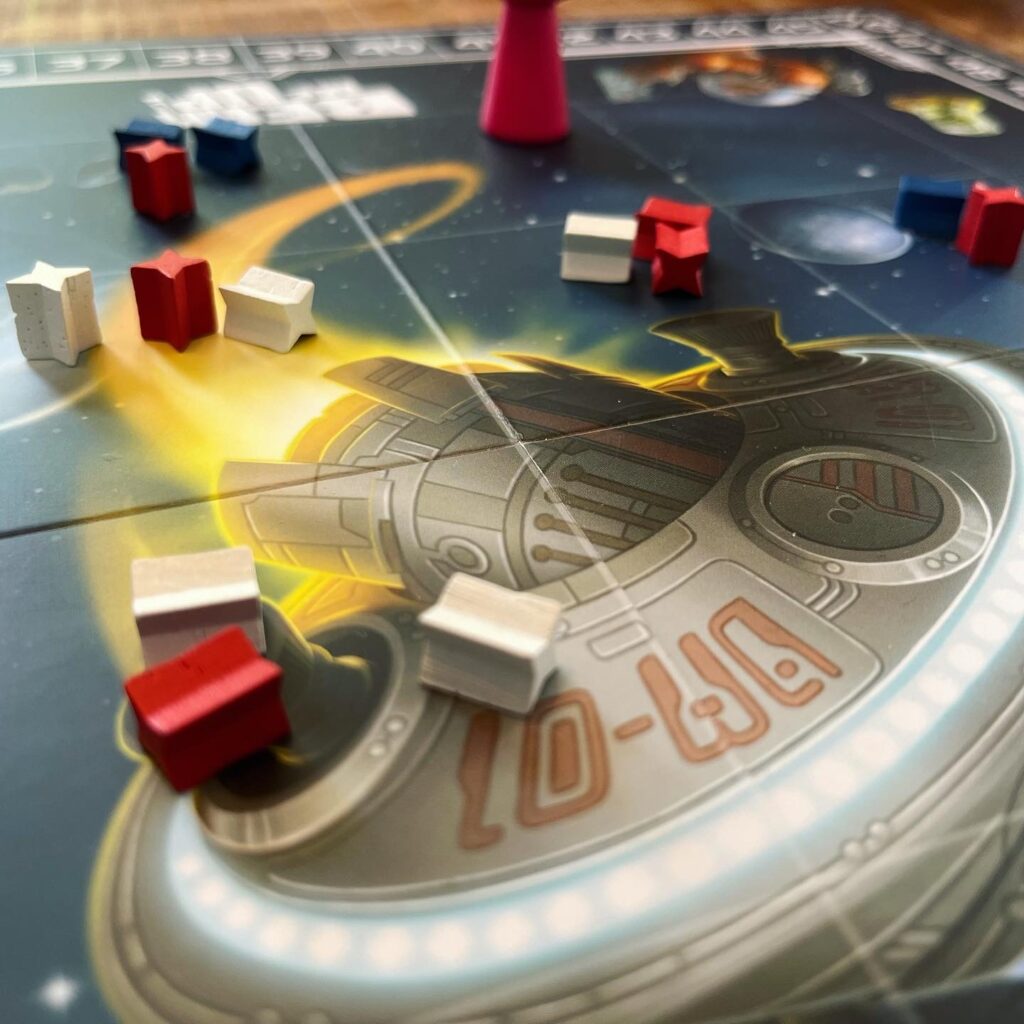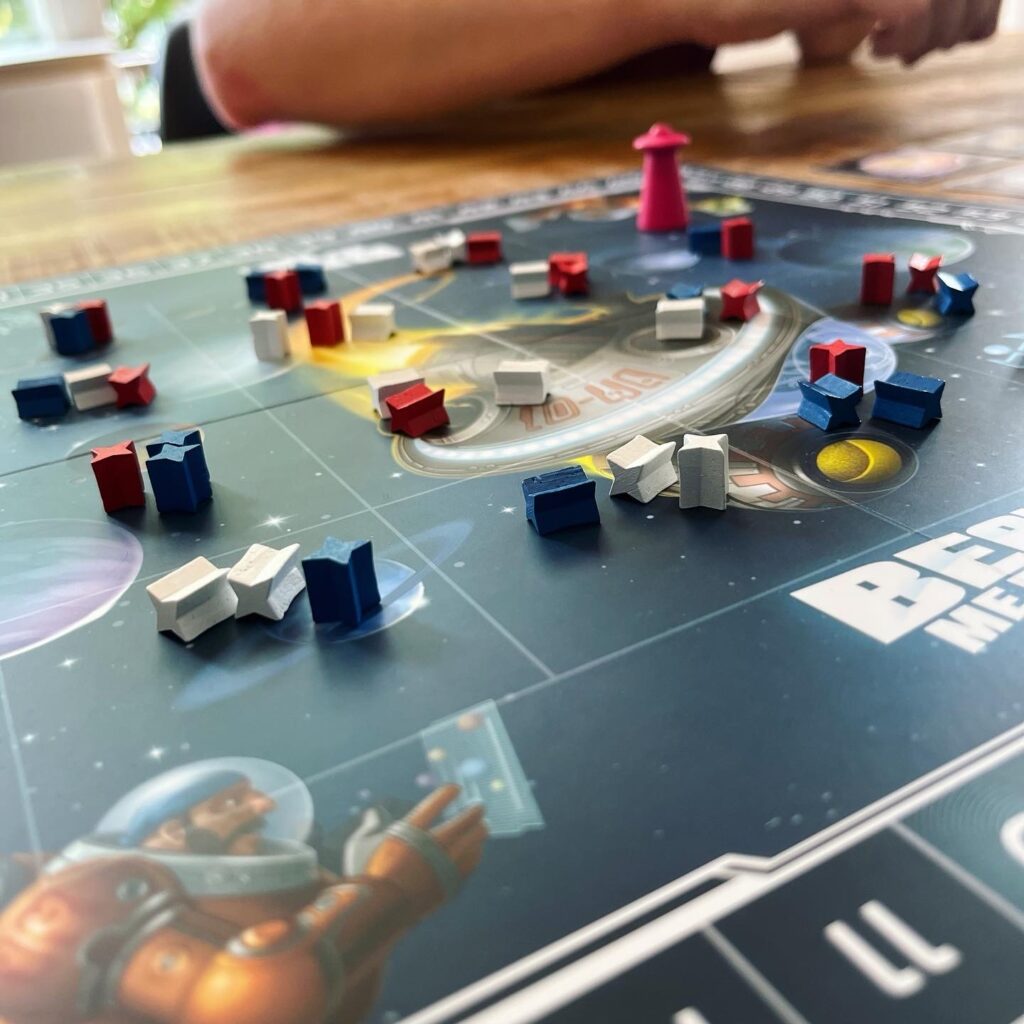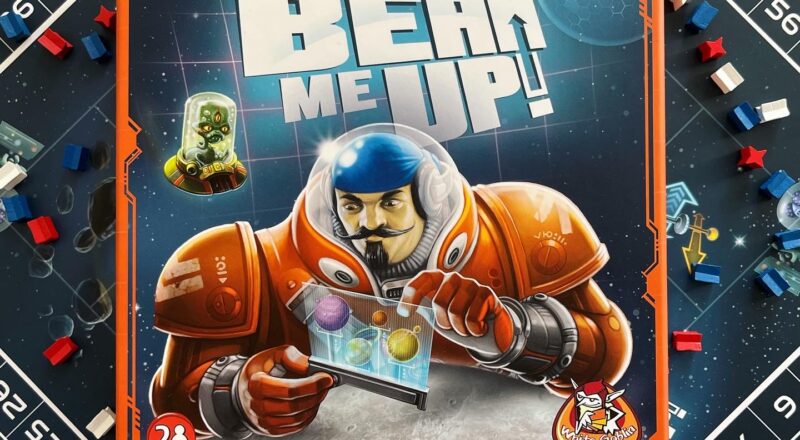“Beam me up, Scotty!” is an oft-(mis)quoted Star Trek phrase, never uttered this way in the once-popular television series. “Beam me up” (or similar) was often used when the main characters of the original Star Trek series wanted to teleport back to the safety of their spaceship the Enterprise. Often the statement was addressed to the Enterprise’s chief engineer Montgomery Scott. Beam Me Up! is also the name of an entirely new board game for two players developed by Dutch publisher White Goblin Games, in which players teleport to different places in space.
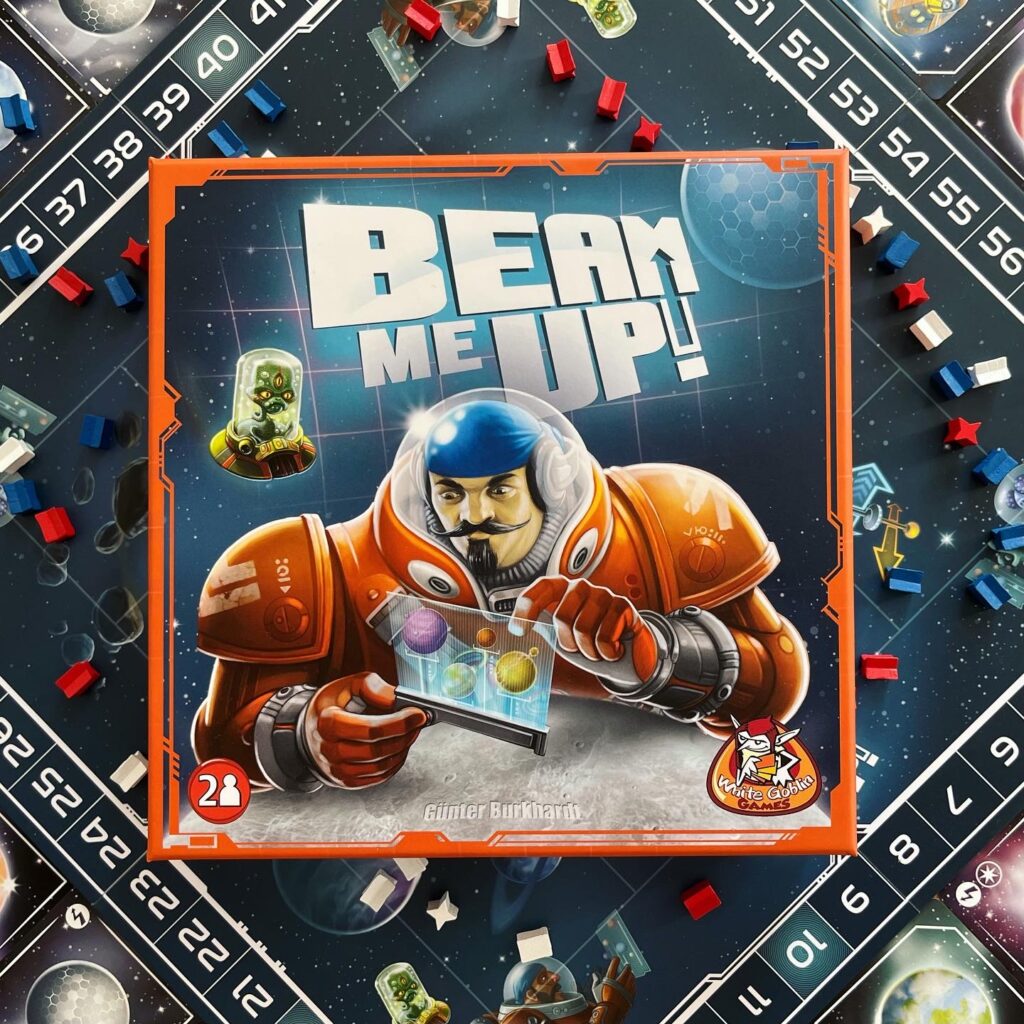
Setup
At the beginning, players set up the game board. From the draw bag they take random stars (in three different colors) and place three random stars per square on the game board. Next to the board, players put down a grid of 4 x 4 random cards. There are now as many cards as there are spaces on the game board. Each player chooses 1 of 3 colors and places their score tokens near the board. A playing piece is placed on the board and parallel to the corresponding card. Players are then ready to begin!
Gameplay
During the game, players take turns moving the playing piece to an available space on the game board where three stars are still available. Players then also move the playing piece on the gravel with cards in a similar manner.
The active player takes the three stones from the board and places these stars on three different cards on the same column or row of the playing piece on the gravel of cards. The player may not place these stars on the card where the playing piece is currently already standing.
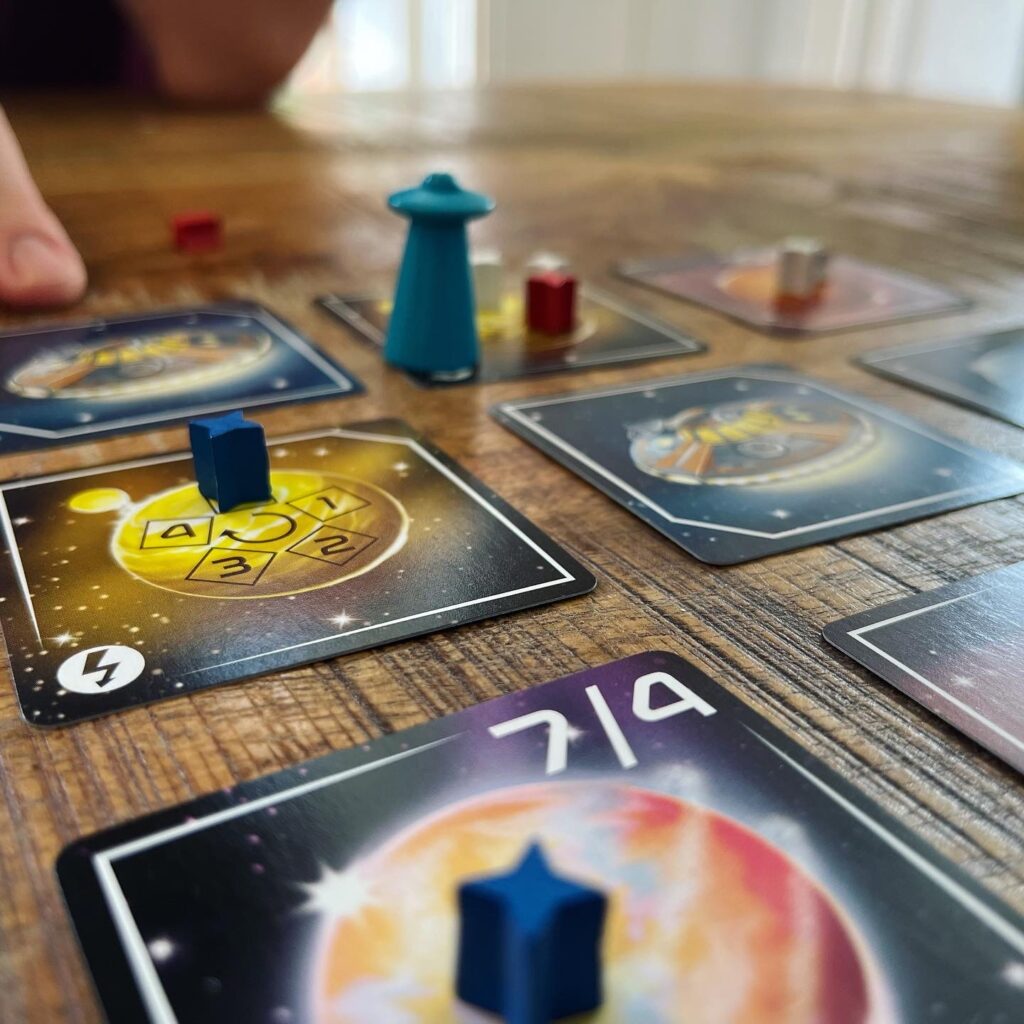

Each card has a unique property or action value stars score points and/or players score points with. The stars have the colors chosen by players and a neutral color. For some cards a player scores equally as stars are placed and for some cards a score is only awarded at the end of the game (for example, with the majority of a color).
Conclusion
In this way, players go a fixed number of rounds accumulating points and moving the playing piece in their gain, but also in such a way that the other player has less of a chance of the same victory. The game mechanism leads to a dynamic but reactive duel between the two players. This is more about quick tactics than thoughtful strategy, as it is difficult to plan ahead as your opponent can unexpectedly send the playing piece to another corner of the universe. But, what remains is an enjoyable tactical and smooth puzzle.
